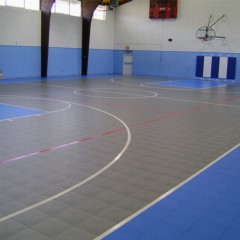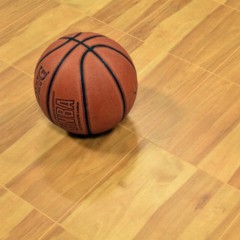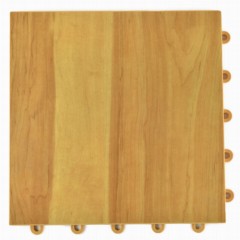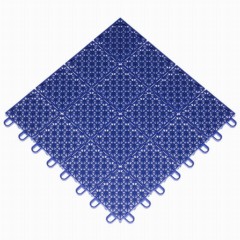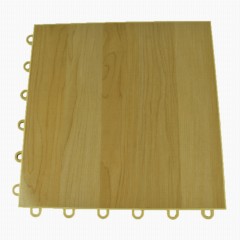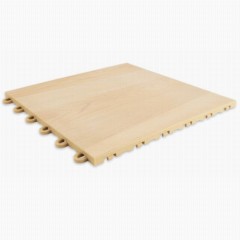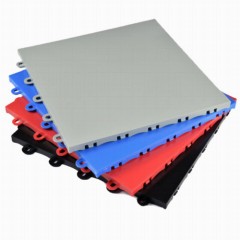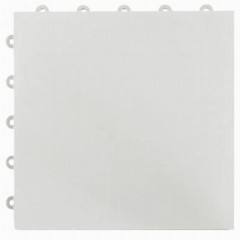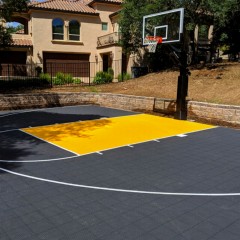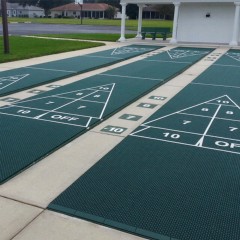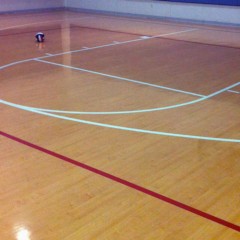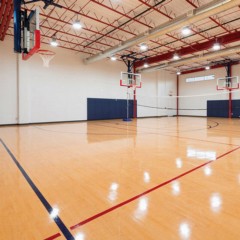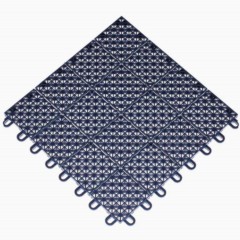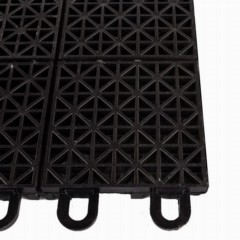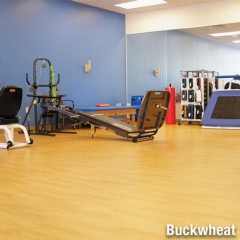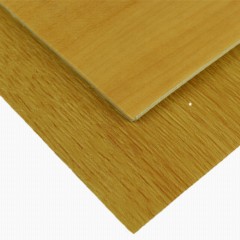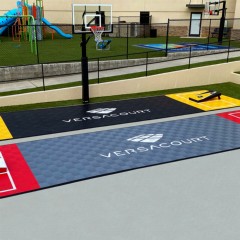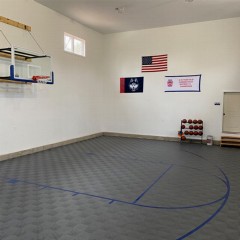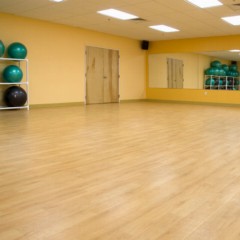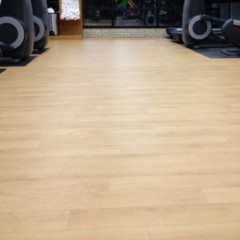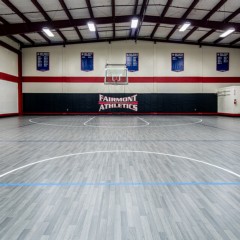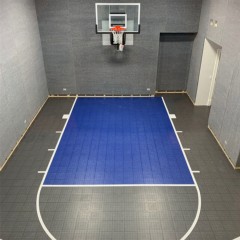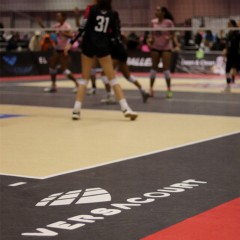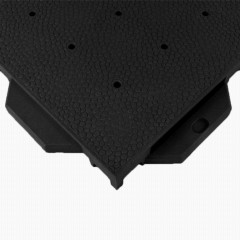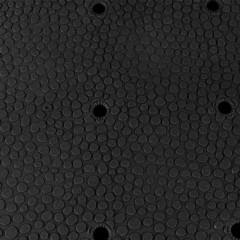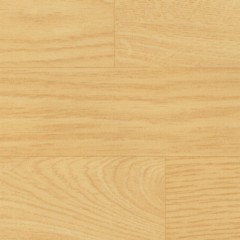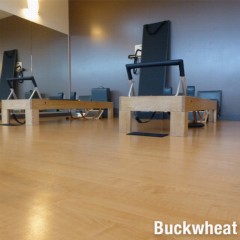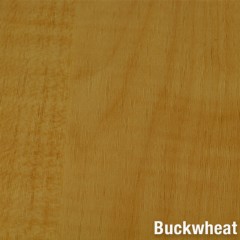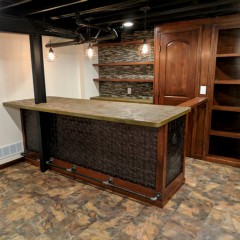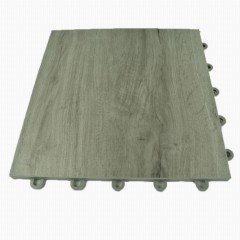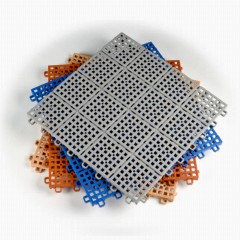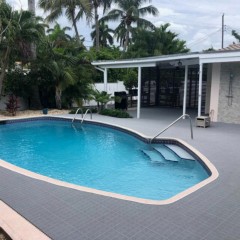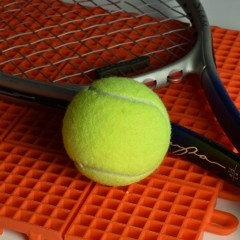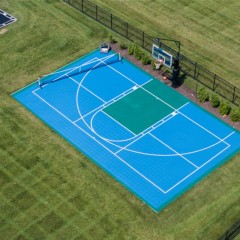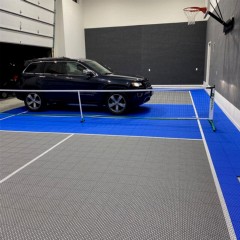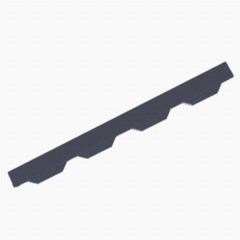Options for Basketball Court Tiles
Creating an outdoor court for basketball is a great idea to give kids a place to exercise and to work on their sports skills. However, it’s important to make sure that this space is as safe as possible. The best basketball court tiles will provide slip resistance and will offer better cushioning than bare concrete.
At Greatmats, we have vinyl, PVC, and plastic basketball court tiles for outdoor and indoor sports courts, depending on the needs you have. Our plastic tiles for basketball court layouts are easy to install, carry a good value, deliver weather resistance, and offer longevity.
Types of Outdoor Basketball Court Flooring
The majority of our products consist of interlocking tiles that do not require glue for the installation. This simplifies creating the layout for those wanting a DIY installation option.
- Indoor: For indoor hoops courts, we typically recommend tiles that have a solid surface.
- Outdoor: For outdoor hoops courts, we recommend making use of tiles with perforations that allow water to drain through to the subflooring, preventing standing water.
Size and Thickness Options
By far, the most common sizes for gym floor tiles for basketball, either indoor or outdoor, are 1x1 feet. Such sizes are easy to handle for installation, as they don’t carry a lot of weight.
The most common available thicknesses in the tiles don’t vary much, either, as we offer:
- 1/2 of an inch
- 9/16 of an inch
- 5/8 of an inch
Materials for Basketball Court Floors
The most common material in use for these basketball tiles will be plastic. Firm polypropylene plastic has excellent durability, and it’s available in either a solid design or with perforations.
PVC plastic is another option when you want a little more cushioning than is found with polypropylene plastic.
Some indoor basketball floor tiling will have a plastic base layer and a vinyl top layer that resembles a wood grain, giving it the appearance of a natural hardwood basketball floor.
Some people choose to use rubber tiles to create a sturdy subfloor over which they can install the other tiles. Rubber delivers cushioning when used as a subfloor.
Rubber does not work well as an
option for the primary basketball floor because it carries too much traction and can damage basketball shoes.
Where to Use Tiles for Indoor Basketball Courts
Indoor courts for basketball games or practice can be used almost anywhere. Even if you only have enough room for a small practice space or a half-court layout, you can use these tiles.
- Bedroom (for ball-handling and dribbling practice)
- Home rec room (for ball-handling and dribbling practice)
- Basement (for ball-handling and dribbling practice)
- Barn
- Garage
- Large shed
- Church
- School
- YMCA
- Youth center
- Fitness center
Tiles can go over the top of carpet or over concrete, or you can create a subfloor out of rubber to deliver the sturdy surface required.
In an area where you need the tiles to resemble a real hardwood court, our
Basketball Court Tile Gym Floor Pro product is an ideal selection.
Should you prefer a solid color in the tiles, we also offer the
Indoor Court Tile Solid Surface product that’s available in more than a dozen colors. You could even mix and match colors if desired.
Where to Use Tiles for Outdoor Basketball Courts
When you have a cement pad outdoors at your home, such as a driveway or a patio, you can easily install these tiles over concrete.
At a park or school with an old tennis court, use the tiles to convert the space into a basketball playing surface. They also work at the end of a large parking lot where people rarely park vehicles.
To create a temporary outdoor court, they can be placed over firm dirt, gravel, or a level grassy area in a backyard. This isn’t an ideal surface, but it does work in a pinch. Just be sure to pick up the tiles each day, or they will eliminate the grass over time.
We have perforated tile options that are perfect for this type of outdoor use, as they allow rain to drain through to the ground, including:
- HomeCourt Sport Tile, which have 16 color options available in 1/2-inch thick polypropylene plastic.
- Outdoor Court Tiles, which have 16 different solid color options available in 1/2-inch thick polypropylene plastic.
- TopCourt Tiles, which also have 16 color choices in 5/8-inch thick polypropylene plastic.
Basketball Court Flooring Tiles Q&A
Can you install outdoor basketball tiles over grass?
Installing a basketball court over a grassy area is not an option we recommend very often, but it can be done. Grass spaces often don’t have enough stability for the game of basketball, even with tiles over the top. Grass also isn’t as flat as concrete or asphalt, which could create a stumbling hazard. We simply
don’t recommend installing basketball tiles over grass if at all possible. For the best ball bounce, a proper subsurface is needed, like concrete or a compact aggregate base.
What is the best outdoor basketball flooring for a home court?
The
best flooring for creating an outdoor court for basketball at home will have perforations that extend through the entire thickness of the tile. Such perforations allow any rainwater to drain through, reducing a slip hazard from standing water on the court.
How can you make a modular basketball dribbling mat?
When you have a small area at home for practicing basketball, you may want to
make a basketball dribbling mat for working on ball handling drills. Use 1x1 foot interlocking basketball tiles to make a ball handling area that fits the space you have available in a basement, rec room, or bedroom.
What are the best backyard basketball court tiles for basketball court surfaces?
The
best tiles for basketball court surfaces in a backyard need to have a few specific features, including durability, stability, UV resistance, slip-resistant traction and more.
 $3,04052 /Roll You Save 11%$8.45/sqftShips Out in 4-6 Working Days SustainableShop$891 /Tile You Save 20%$5.24/sqftShop$2,24342 /Roll You Save 15%$6.81/sqftShips Out in 4-6 Working Days SustainableShop$1,42258 /Roll You Save 19%$7.90/sqftShop$403 /Tile You Save 20%$5.81/sqftShop$5445 /TileShips Out in 3-5 Working DaysShop$2,65641 /Roll You Save 15%$6.18/sqftShips Out in 4-6 Working Days SustainableShop$3,68022 /Roll You Save 11%$10.22/sqftShips Out in 1-3 Working Days SustainableShop$598 /Tile You Save 33%$5.98/sqftShips Out in 1-3 Working DaysShop$480 /Tile You Save 26%$5.22/sqftShips Out in 1-3 Working Days Free ShippingShop$353 /Tile You Save 19%$5.12/sqftShop$1440 /Each You Save 20%$44.12/sqftShop
$3,04052 /Roll You Save 11%$8.45/sqftShips Out in 4-6 Working Days SustainableShop$891 /Tile You Save 20%$5.24/sqftShop$2,24342 /Roll You Save 15%$6.81/sqftShips Out in 4-6 Working Days SustainableShop$1,42258 /Roll You Save 19%$7.90/sqftShop$403 /Tile You Save 20%$5.81/sqftShop$5445 /TileShips Out in 3-5 Working DaysShop$2,65641 /Roll You Save 15%$6.18/sqftShips Out in 4-6 Working Days SustainableShop$3,68022 /Roll You Save 11%$10.22/sqftShips Out in 1-3 Working Days SustainableShop$598 /Tile You Save 33%$5.98/sqftShips Out in 1-3 Working DaysShop$480 /Tile You Save 26%$5.22/sqftShips Out in 1-3 Working Days Free ShippingShop$353 /Tile You Save 19%$5.12/sqftShop$1440 /Each You Save 20%$44.12/sqftShop